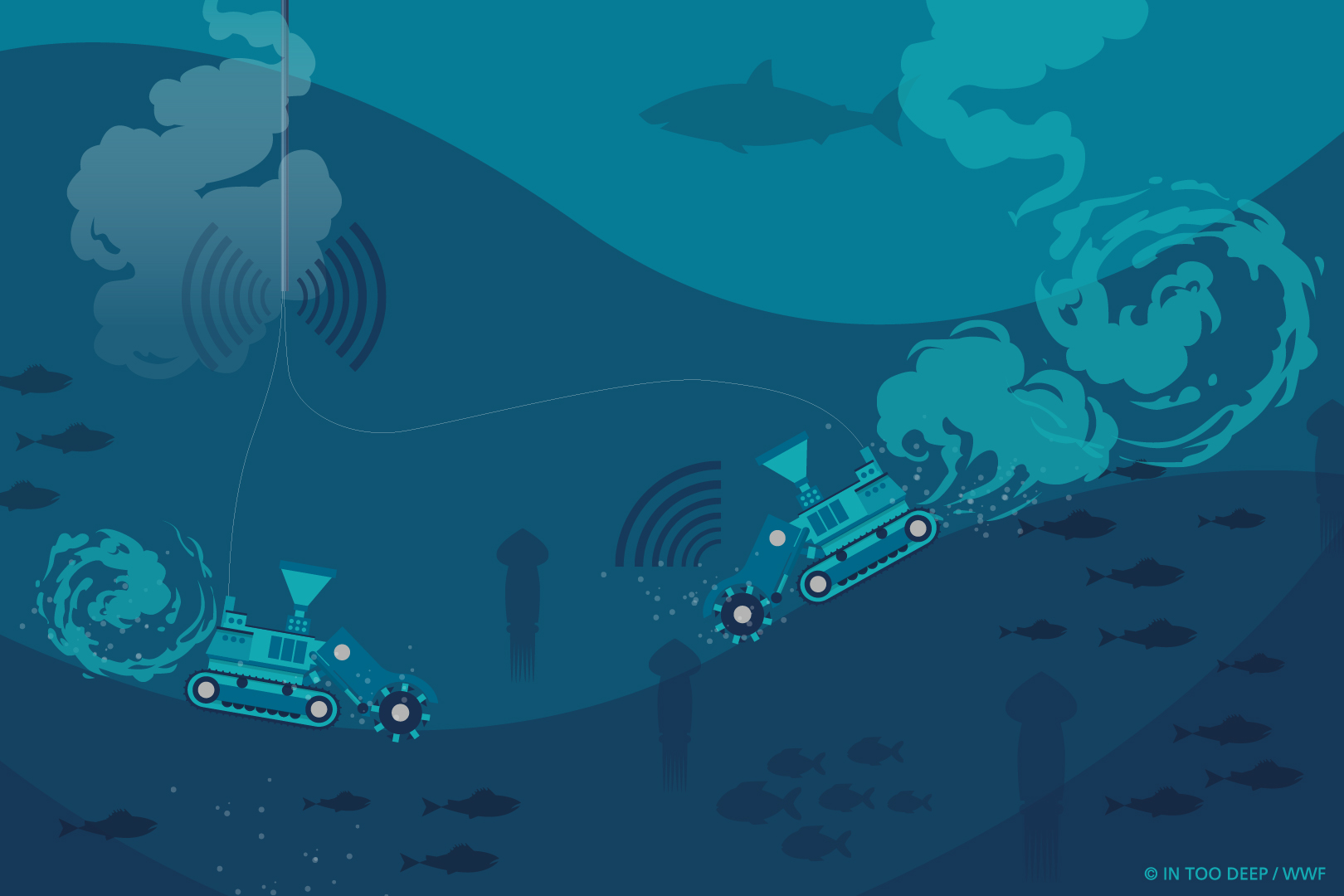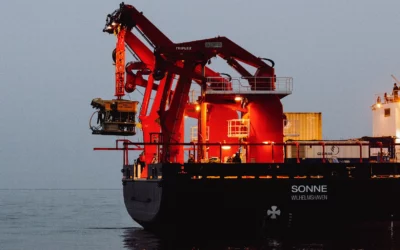may we introduce This is Fred or scientifically correct Stauroteuthis syrtensi. It lives in the deep sea at over 1000 meters below the sea surface and is one of the few octopuses that luminesces.
Only at the end of last year, almost 200 countries reached an agreement in Montreal that might also define the future of Fred and his kind decides. A global plan to protect biodiversity with specific objectives is intended to stop the ongoing loss of habitats and biodiversity worldwide. When we think of biodiversity, we have we often see blooming meadows and less the diversity of life in the deep sea. The deep sea floor covers more than half of our earth, but so far humans have only explored a fraction of this vastness. One thing is undisputed: the ocean and its ecosystems have countless and important functions for people all over the world, be it as a source of food, an opportunity to earn an income or for climate regulation. It is well known that life in the deep sea is a fragile system that is home to hundreds of thousands of species and where more new species are discovered with every research voyage.
When we think of biodiversity, we have we often see blooming meadows and less the diversity of life in the deep sea. The deep sea floor covers more than half of our earth, but so far humans have only explored a fraction of this vastness. One thing is undisputed: the ocean and its ecosystems have countless and important functions for people all over the world, be it as a source of food, an opportunity to earn an income or for climate regulation. It is well known that life in the deep sea is a fragile system that is home to hundreds of thousands of species and where more new species are discovered with every research voyage.
Deep sea mining and IT technology
Meanwhile, the possibility of deep-sea mining is repeatedly discussed, especially in relation to the increasing demand for raw materials and precious metals, especially for IT technologies and products. Before we know more about Fred and the complex and fragile ecosystem of the deep sea, we should definitely not start mining resources there commercially. Because this serious intervention would have unforeseeable consequences.
In addition to the activities of states, it is also important that companies see themselves as key players and take a stand, after all they are the processors of the resources. That’s why we as SHIFT recently signed the moratorium on deep sea mining along with other companies.
 If we have been able to win you over to this topic so far, then we recommend this impressive video< /a> from the WWF, in which again many connections and which touched us deeply:
If we have been able to win you over to this topic so far, then we recommend this impressive video< /a> from the WWF, in which again many connections and which touched us deeply:
Finally, good news: After more than 15 years of negotiations, the Convention on the Protection of “Biodiversity Beyond National Legislation” (BBNJ) to protect the oceans was completed at the UN in New York at the beginning of March 2023. The agreement is the next logical step after the Montreal World Biodiversity Conference late last year. There, the international community had agreed to designate 30 percent of the seas as protected areas by 2030. to set up protected areas in the so-called high seas, i.e. in areas beyond national jurisdiction. The UN agreement will now create such a set of rules when it comes into force after ratification by 60 states. In addition to a mechanism for designating protected areas, it also stipulates that the effects of human activities on the marine ecosystems in the high seas must be assessed using so-called environmental impact assessments.




